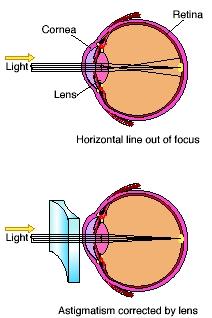Vision Disorders - Diagnosis
Vision disorders are sometimes difficult to diagnose. Many people with vision disorders are not aware of their problem. They have often grown up seeing the world slightly out of focus and their view of objects may seem perfectly normal.
As a result, many vision problems are detected by others. For example, school teachers may realize that a pupil is unable to read the blackboard. Or a parent may notice that a child is constantly squinting while trying to read. In such cases, the individual is referred to an eye specialist for examination.

Many tests are available for detecting vision disorders. The most common tests involve the use of the familiar eye chart. The eye chart contains rows of letters of decreasing size going from top to bottom. The patient is asked to read each row on the chart. The last row the patient is able to read tells how accurate is his or her vision.
The results of an eye chart test are usually indicated by a pair of numbers, such as 20/50. These numbers show how well a person can see an object compared to a person with normal eyesight. A person with 20/50 vision can see at 20 feet from an eye chart what a person with normal vision can see at 50 feet from the chart.
Vision disorders are measured by having a patient look through various lenses at an eye chart. The lens are changed until the patient is able to see the letters on the chart clearly. The degree of error in the patient's eye is determined by the lens needed to produce perfect vision. This degree of error is measured in units called diopters (abbreviated: D). The prescription a doctor writes for glasses will indicate the shape of the lens (the diopter measurements) needed to provide perfect vision.
A simple test for astigmatism consists of a dial containing lines that radiate outward from the center. A person with astigmatism will be able to see some lines more clearly than other lines.
Doctors may also use direct tests on the eye. For example, a device known as a corneal topographer can be used to measure the shape of the cornea and determine whether the shape is correct or not. Doctors can also shine a light directly at the retina in a person's eye to look for any damage.

Comment about this article, ask questions, or add new information about this topic: